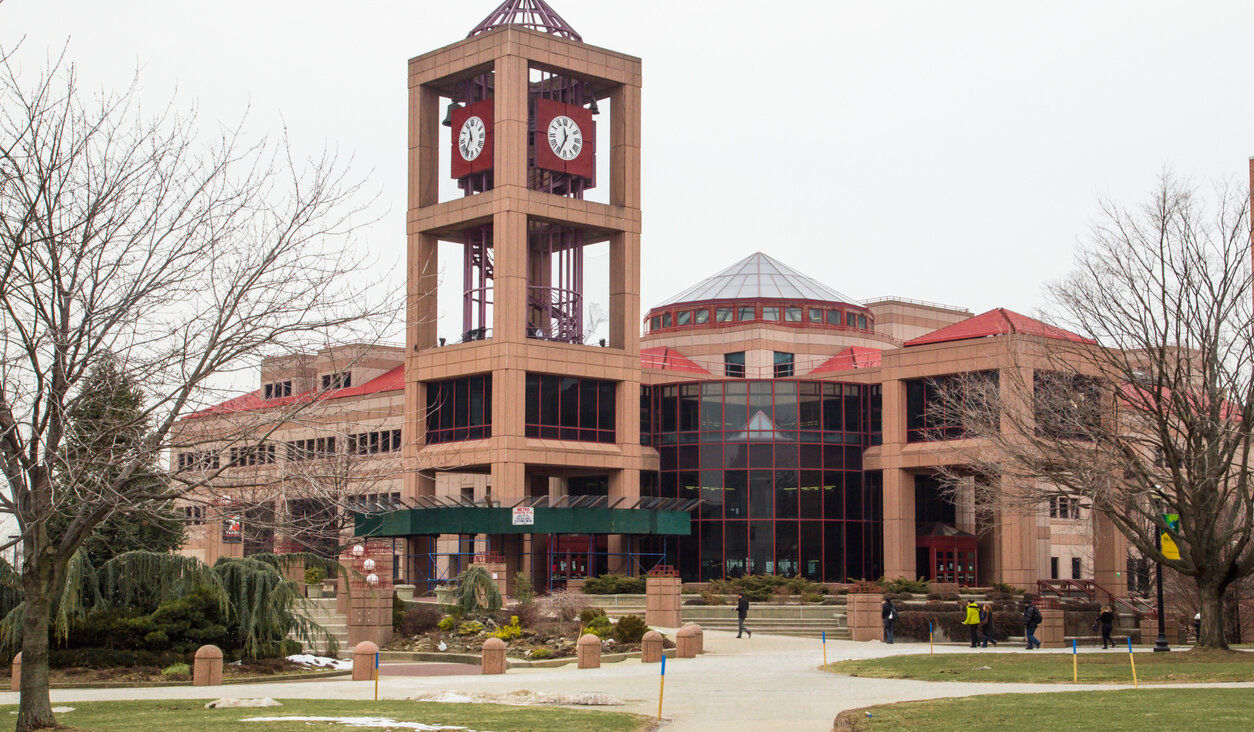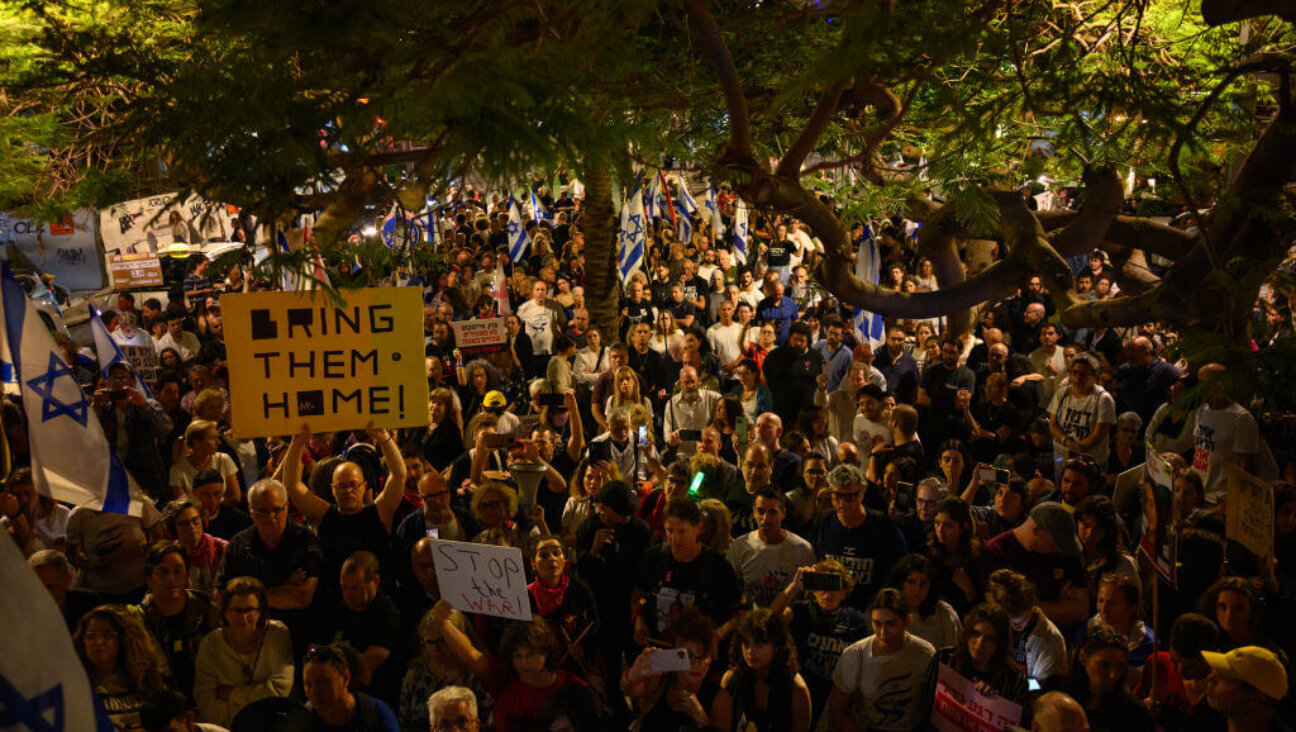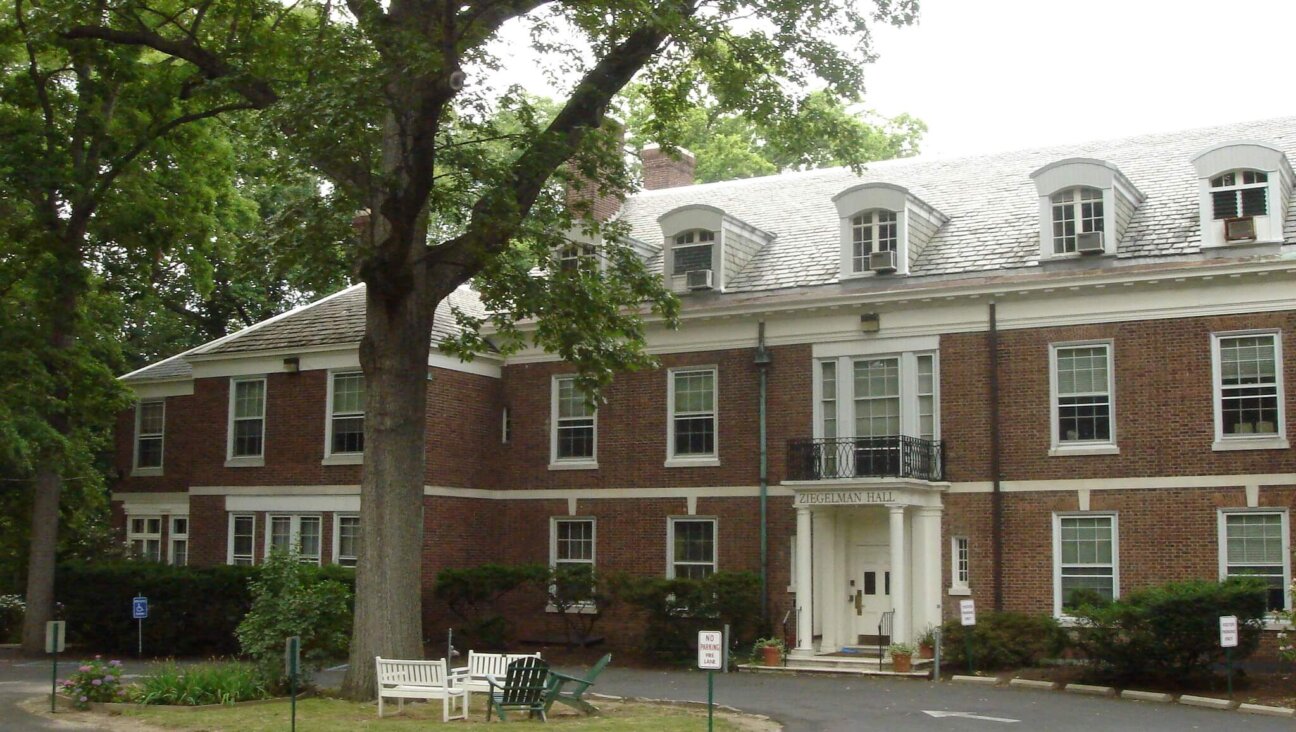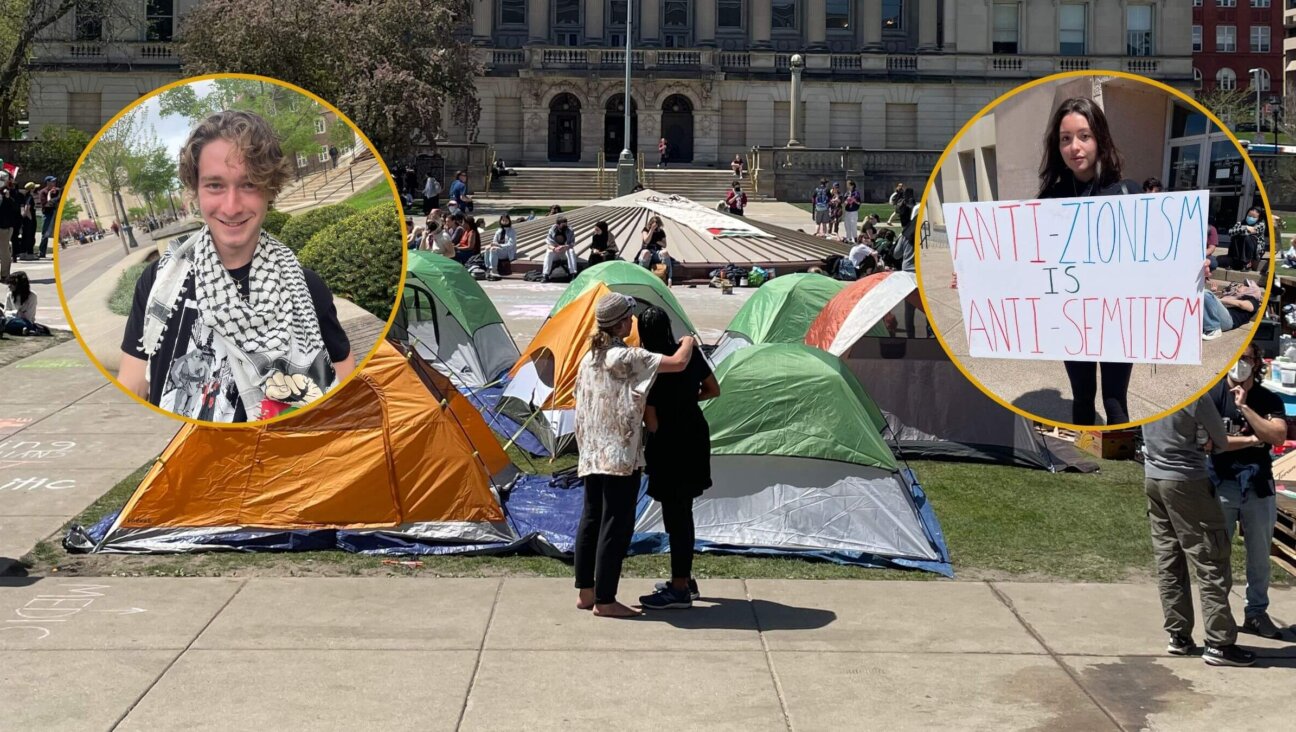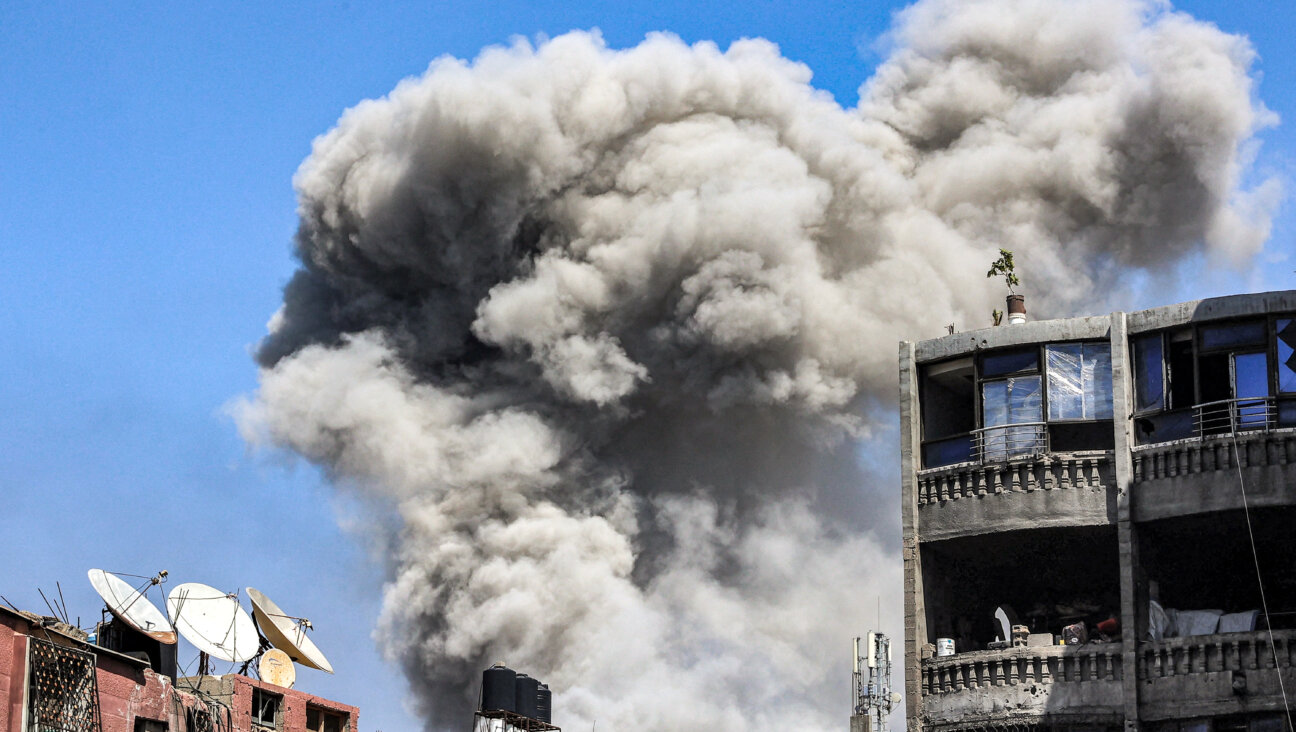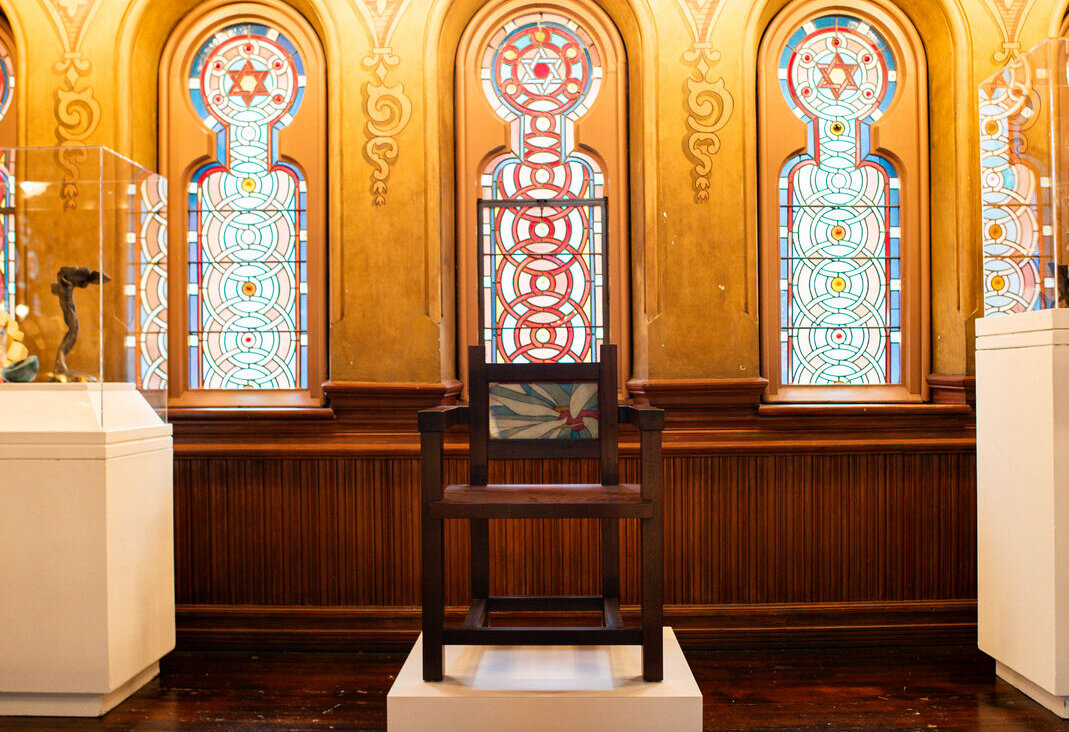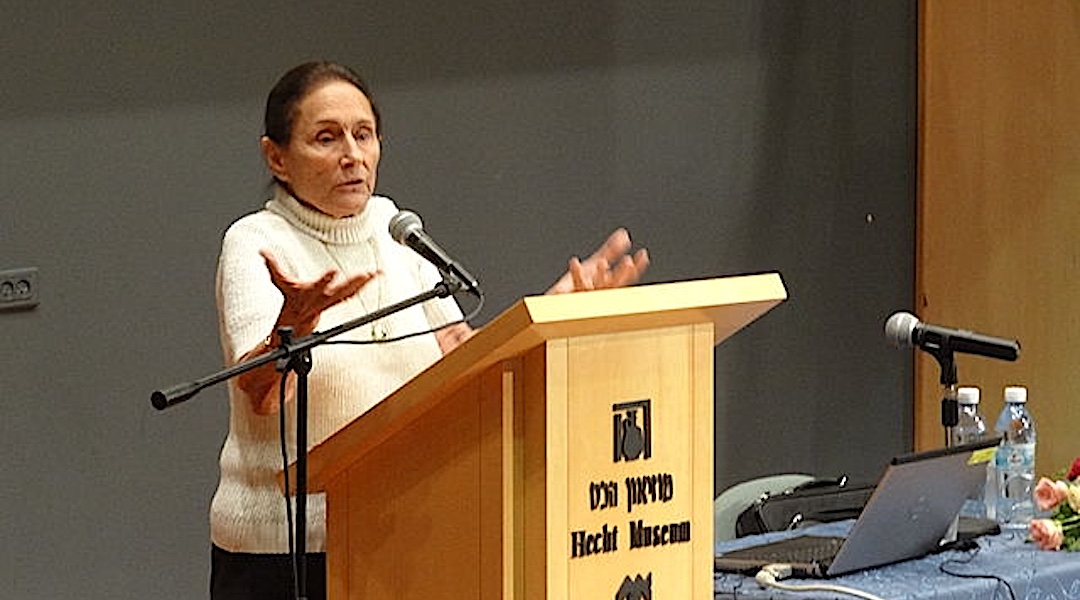The ancient Jewish practice of hakhel, an every-7-years gathering, gets a 21st-century revival

An AI-generated illustration of an ancient king reading the Torah to an assembly of Jewish men, women and children, in keeping with the commandment of hakhel. (Image generated by DALL-E)
(JTA) — Every seven years, in ancient times, Jewish men, women, and children would gather at the Temple on the first day of Sukkot to hear the king of Jerusalem read aloud from the Torah.
In 2022, there’s no king and no Temple, and more than half of all Jews live far from Jerusalem — but the ritual is still inspiring Jews around the world to gather together. In fact, the tradition, known as hakhel, appears to be seeing a resurgence of popular interest.
In Northampton, Massachusetts, Abundance Farm will host an outdoor festival with tree planting, music, pickles and cider to mark the end of the seven-year cycle of the shmita or agricultural sabbatical year to which hakhel is tied.
At Mount Zion Temple, in St. Paul, Minnesota, community members will learn and share Torah verses that inspire them and move them to action.
Mitsui Collective, a Jewish community-building organization, is hosting an online “in-gathering” in honor of hakhel. Other congregations and communities will host events online and in person that include Torah study, social activities and reflection on the next seven years of Jewish life.
In New York City, a hakhel event planned for outside of Chabad’s headquarters in Crown Heights is expected to crowd the streets there, while Chabad of Midtown will host a Sukkot event for young Jewish professionals in the spirit of the ancient practice.
“The biggest commemoration of it all is actually just primarily bringing people together and celebrating as Jews,” said Rabbi Levi Shmotkin, director of Chabad Young Professionals.
“Especially in our times now, it’s something that people are craving,” he added. “To have that feeling of community, of commitment, of unity, of togetherness, of being part of something greater than themselves.”
Hakhel — the imperative “Assemble!” in Hebrew — is the penultimate commandment outlined in the Torah. “Gather the people — men, women, children and the strangers in your communities — that they may hear and so learn to revere your God and to observe faithfully every word of this teaching,” Moses tells his followers. Historical records show that the gathering was practiced during the time of the Second Temple in Jerusalem. But after it was destroyed in 70 CE, sending the Jews scattering, hakhel collapsed as a practice, too.
The contemporary revival began in the late 19th century, when a Polish rabbi named Eliyahu David Rabinowitz-Teomim published an anonymous pamphlet with a proposal to observe an assembly “in renewal of hakhel.”
The founding of Israel in 1948 invigorated the practice of multiple laws specific to the land of the ancient Jews, including the commandment to leave fields fallow every seven years, and renewed attention to hakhel. In 1952, the conclusion of the first shmita year after Israel’s founding, parallel events were held in Jerusalem and New York City.
Still, hakhel has remained unknown to many American Jews, with the prominent exception of those affiliated with the Chabad-Lubavitch Orthodox movement. In the mid-20th century, Rabbi Menachem Mendel Schneerson of the Lubavitch Hasidic dynasty exhorted his followers to observe hakhel in a modern way, focused on the spirit of gathering and on the education of children. Since then, it has become de rigueur in Chabad circles, and the movement says it is hosting more than 500 hakhel gatherings around the world this year — including a reenactment of the ancient rituals at a girls school in Montreal and an outing to an amusement park in Connecticut.
Rabbi Ethan Tucker, president and rosh yeshiva of Hadar, an egalitarian yeshiva in New York, says he has noticed more chatter about hakhel among other Jews in recent years. Whether that’s because social media has allowed proponents of the ritual to find each other more easily, or the widening practice of shmita in Israel has led to more awareness, or something else entirely is going on is anyone’s guess, he said.
But he said hakhel’s explicit inclusion of women and children makes it an attractive ritual for many Jews today.
“We live in a cultural moment where people are thinking a tremendous amount about inclusion, and about the ways in which communal institutions can actually draw everyone in,” Tucker said.
“The notion that there’s a biblical and cultural precedent from within the tradition that already stands for that, I think, is very compelling,” he added.
Most hakhel gatherings are designed to channel the spirit of the commandment and to celebrate the conclusion of the agricultural cycle, including sometimes by discussing environmental issues including how to combat climate change.
But at least one group is also planning to carry out the most expansive interpretation of the hakhel commandment. Judaism Unbound, a group that aims to engage “disaffected but hopeful” American Jews, is hosting a recitation of the entire Torah — all 52 portions that are read in synagogues throughout the year — during an online event that starts at 5:30 a.m. Wednesday; the group estimates that the reading will take more than 15 hours.
In Jerusalem, there will be a hakhel event at the Western Wall plaza on the second day of Sukkot, where three new Torah scrolls will be dedicated. Expected to attend are Isaac Herzog, the current president of Israel whose grandfather, then the Ashkenazi chief rabbi, was present at the country’s first hakhel celebration, as well as many prominent rabbis, cantors and singers.
The observance of Simchat Torah, the upcoming holiday that marks the completion of the annual Torah reading cycle, is in some ways a tribute to what hakhel recalls. It’s typically celebrated with festive gatherings in which all members of the community engage with Torah scrolls; like hakhel, the holiday is famously child-friendly.
“It’s always fascinating how great ideas and memorable rituals don’t really ever die,” Tucker said. “They’re always ripe for a revival or they take on new forms.”
This article originally appeared on JTA.org.

I hope you appreciated this article. Before you go, I’d like to ask you to please support the Forward’s award-winning, nonprofit journalism during this critical time.
Now more than ever, American Jews need independent news they can trust, with reporting driven by truth, not ideology. We serve you, not any ideological agenda.
At a time when other newsrooms are closing or cutting back, the Forward has removed its paywall and invested additional resources to report on the ground from Israel and around the U.S. on the impact of the war, rising antisemitism and the protests on college campuses.
Readers like you make it all possible. Support our work by becoming a Forward Member and connect with our journalism and your community.
Make a gift of any size and become a Forward member today. You’ll support our mission to tell the American Jewish story fully and fairly.
— Rachel Fishman Feddersen, Publisher and CEO
Join our mission to tell the Jewish story fully and fairly.







